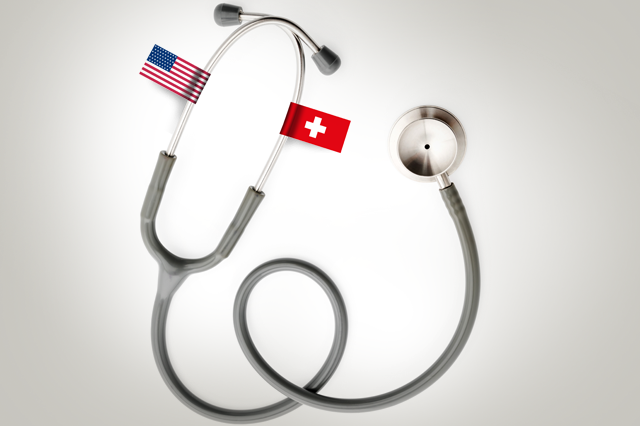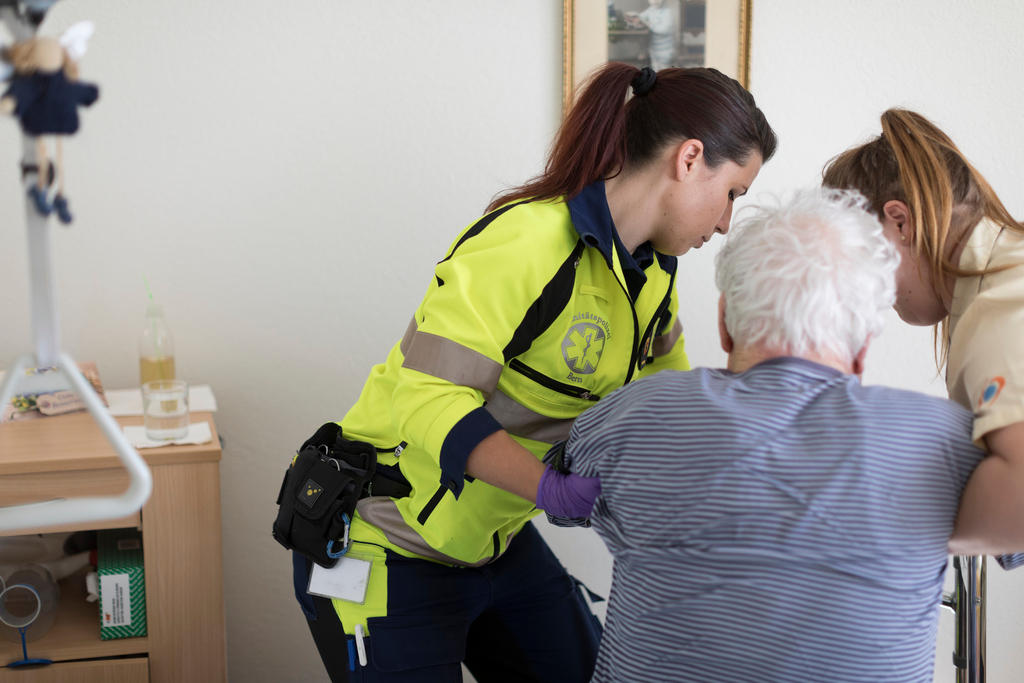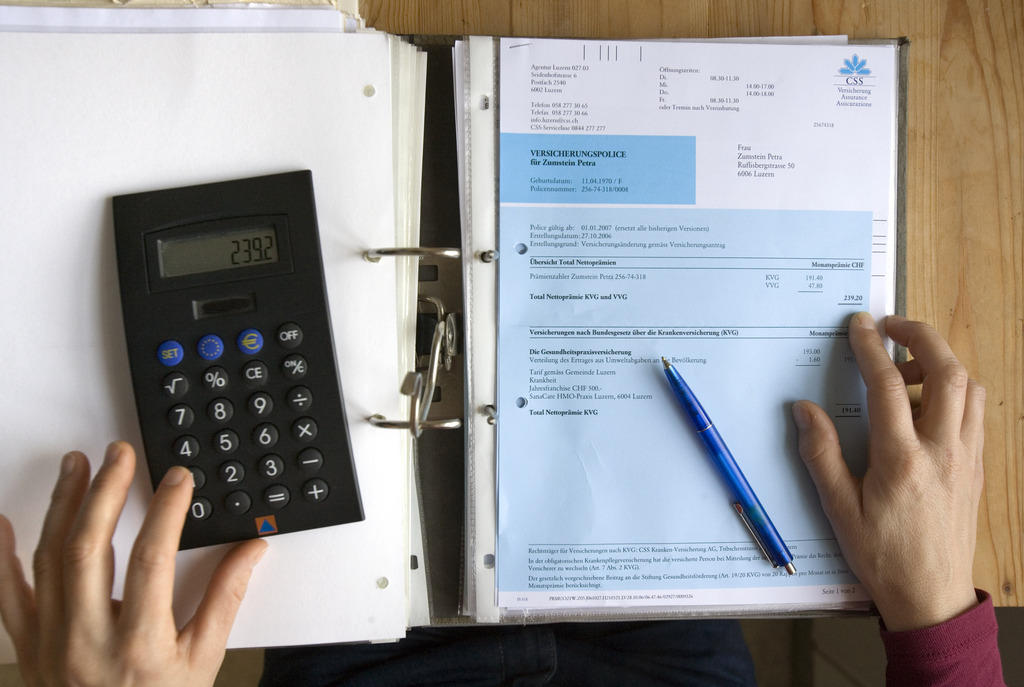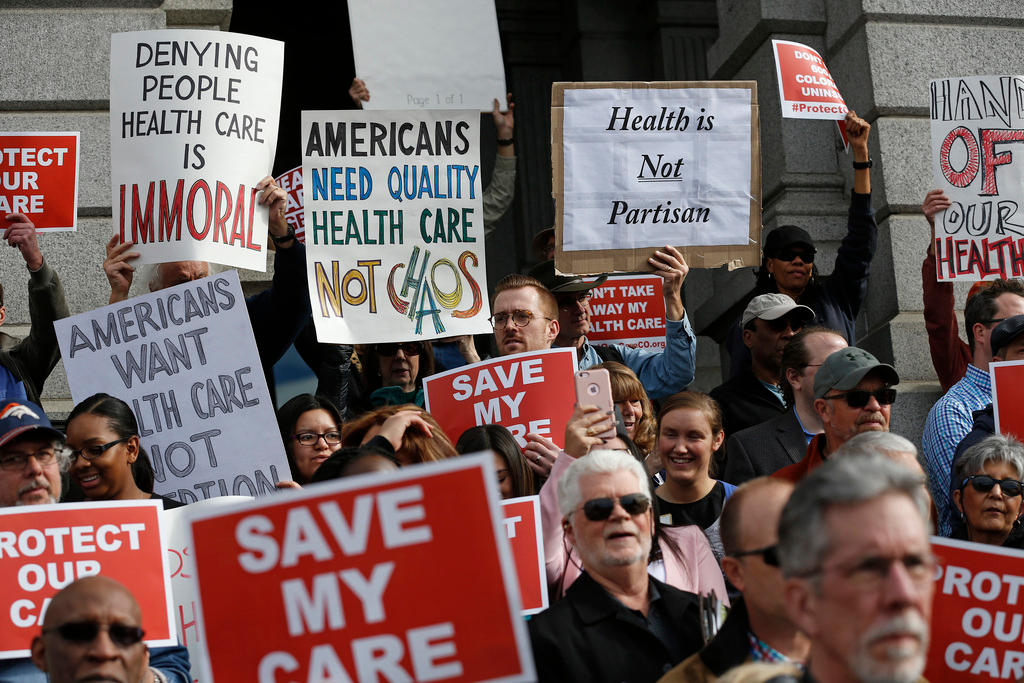What’s being done to bring down high drug costs?

If you compare pharmaceutical costs across countries, you, no doubt, will experience a bit of sticker shock without understanding how prices are determined. In this article, we try to unravel the tangled web of players and factors that influence costs.
Let’s start with some examplesExternal link: if you needed a 30-day supply of a drug called Xarelto to prevent or treat blood clots, you’d shell out about CHF100 ($102) in Switzerland. In the United States you’d be out an average $292. Or maybe you’re prescribed the painkiller Oxycontin. In Switzerland a 30-day supply costs $95, and in the US it would be $265. (Also, this is a drug with a controversial historyExternal link.)
Swiss per capita spending on drugs is among the highest in Europe, but not nearly as high as in the US, which spends roughly double the amount that Switzerland does, and more than any other country, based on the latest OECD dataExternal link.
A major factor behind these astronomical costs is price, but that’s not all.

Why are prices so high?
The most recent study by the Swiss price watchdog showed that the cheapest generic drug in Switzerland was two and a half times more expensiveExternal link than in the 15 major European countries surveyed. Several groups, including the government-mandated watchdog, consumer advocates and the umbrella organization of health insurers, have for years clamored for measures to bring down prices.
Historically, differing exchange rates played a roleExternal link in the marked difference in drug prices between Switzerland and abroad. But the price inspector also places the blame on a highly regulated and controlled pharmaceutical market – government agencies decide which drugs are eligible for reimbursementExternal link by basic health insurance and at what price they’re sold – that discourages competition.
Regulation also makes it difficult for generic drug-makers to enter the market, as they must meet a series of requirementsExternal link, which increase costs that are ultimately shouldered by consumers.

Competition factor in US
A lack of competition, to a degree, is also part of the price problem in the US. As in Switzerland, pharmaceutical companies are provided patent protections when they develop a new drug, allowing them to protect their investment in new methods, technology, and compounds. And the pharma lobbyExternal link points to protecting past and future research investments as an important piece of the business.
During this period of a market monopoly, firms can change prices as they see fit (what the market will bear), and some find ways to repackage a drug to re-up their patent. This can be combined with a tactic called “pay for delay”External link, where a drug company rewards a generic drug competitor for waiting to produce a cheaper version of the medication.
Still, Americans, just as well as Swiss, have been asking why such high prices are the norm. Some US observers think plainly, “because there’s nothing stopping them”External link. Prices in the US are determined by the market, or by negotiated deals with insurance companies. The government does not impose price controls, even for Medicare patients. The full-service healthcare system of the Veterans Administration (VA) does negotiate prices, and some states have tried to link state healthcare drug costs to those of the VA, but in both California and Ohio voters have said noExternal link, largely because the issue is complicated and unclear.
The US is also prescribing drugs more than other countriesExternal link, for ailments connected to things like obesity, which preventive medicine initiatives aim to head-off. (We’ll cover preventive medicine in our next article)
What’s clear is people in both Switzerland and the US are talking about how expensive drugs are, but what’s to be done?

The Swiss example
The Swiss health care law that came into effect in 1996 made it mandatory for the government to make regular international comparisons in order to adjust drug prices. The public health office reviews prices every three years, tackling a third of the list of authorized medications every 12 months. A package of measures introduced in 2006 to bring down drug prices resulted in savings of CHF365 million that yearExternal link.
Despite these steps, prices have continued to rise, calling into question the efficacy of the review. Consumer advocates and others have long called for a reference price systemExternal link similar to ones that exist elsewhere in Europe, whereby a maximum priceExternal link to be reimbursed by health insurance is fixed for certain types of drugs. This would encourage patients to buy cheaper medicine, such as generic drugs, and encourage competition as producers reduce their prices to meet the fixed ceiling. The idea has been backed by a panel of experts convened in 2016 to make a series of recommendations for reducing health care costsExternal link, which the government is now considering.
In the meantime, patients can take heart in piecemeal drops in costs. Following the most recent drug price review, the Federal Office for Public Health said it would be reducing the price of about 100 drugsExternal link by an average of 14% effective January 1, 2018. The regular reviews saved the basic health insurance system some CHF600 million between 2012 and 2014.
US recommendations
In the US a number of recommendationsExternal link have been put forward. These include allowing more government price negotiation for Medicare and Medicaid; allowing more drug imports; discouragingExternal link television ads and rebates for particular drugs; simplifying the pathway for generic drugs to get to market; defering more costs from patients to insurance; and perhaps adding much more transparency in the pricing system.
There have been some examples of public outcry leading to lower costs. In the case of the EpiPenExternal link – a delivery system for medicine for severe allergic reactions – the list price increased from $94 to $609 after drug company Mylan obtained rights to it. However, in part because of a public outcry, a generic EpiPen was put on the market, and a competing delivery system also found traction with pharmacy chain CVS.
It’s not clear if the EpiPen example represents a path forward for widespread change in drug pricing in the US. But most agree – in both the US and Switzerland – that greater transparency and more awareness are a good thing.
Ask a question about the Swiss and US health care systems and we may cover it in this series:

In compliance with the JTI standards
More: SWI swissinfo.ch certified by the Journalism Trust Initiative





You can find an overview of ongoing debates with our journalists here. Please join us!
If you want to start a conversation about a topic raised in this article or want to report factual errors, email us at english@swissinfo.ch.